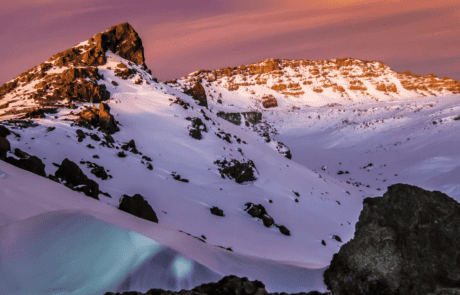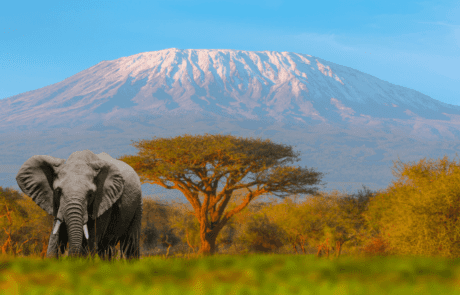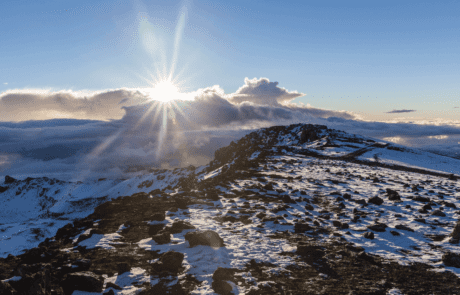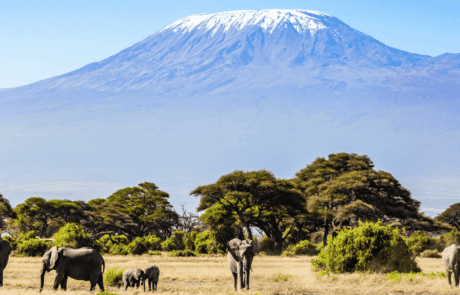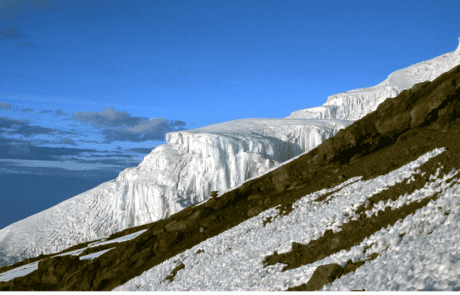Mount Kilimanjaro National park
Whether you’re an experienced mountaineer seeking a new challenge or a nature enthusiast yearning to immerse yourself in the wonders of the natural world, a journey to Mount Kilimanjaro promises unforgettable memories and breathtaking moments that will stay with you forever.
Design your trip
Design your trip
Mount Kilimanjaro National Park: A Guide to Africa’s Highest Peak
Mount Kilimanjaro National Park is home to the iconic peak that stands as the tallest mountain in Africa and one of the world’s most famous natural landmarks. This UNESCO World Heritage Site draws thousands of visitors each year, seeking the challenge and adventure of climbing to the summit of this majestic mountain. With its diverse ecosystems, stunning scenery, and rich biodiversity, Mount Kilimanjaro National Park offers a truly unique and unforgettable experience for all who visit.
History and Geology of Mount Kilimanjaro
Mount Kilimanjaro is a dormant volcano that consists of three volcanic cones: Kibo, Mawenzi, and Shira. The highest peak, Uhuru Peak, is located on the Kibo cone, towering at an impressive 19,341 feet above sea level. The mountain’s formation can be traced back millions of years, as tectonic movements and volcanic activity shaped the landscape we see today.
The name “Kilimanjaro” is believed to have a Swahili origin, meaning “shining mountain” or “white mountain.” This name perfectly captures the snow-capped summit of the mountain, a stark contrast to the lush forests and savannahs that surround its base.
The diverse ecosystems of Mount Kilimanjaro National Park
One of the most remarkable aspects of Mount Kilimanjaro is its diverse range of ecosystems, which change dramatically as you ascend the mountain. From the cultivated farmlands and rainforests at the base of the mountain to the alpine desert and arctic conditions at the summit, each zone offers a unique and breathtaking landscape to explore.
The lower slopes of the mountain are covered in lush, montane forests that are home to a variety of wildlife, including elephants, leopards, and monkeys. As you climb higher, the vegetation transitions to heath and moorland, with hardy plants such as lobelias and senecios thriving in the thin air and rocky terrain. Finally, the summit of the mountain is a barren, snow-covered wasteland, where only the most resilient plants and animals can survive.
Wildlife in Mount Kilimanjaro National Park
Mount Kilimanjaro National Park is not only a paradise for hikers and adventure-seekers but also a haven for wildlife. The park is home to a diverse array of species, from the iconic African elephant to the elusive leopard and the colorful chameleon.
One of the highlights of the park is its population of colobus monkeys, which can often be seen swinging through the trees in the montane forests. Birdwatchers will also be delighted by the park’s avian residents, including the endangered Abbot’s starling and the striking Hartlaub’s turaco.
The best time to visit Mount Kilimanjaro National Park
The best time to visit Mount Kilimanjaro largely depends on your climbing preferences and tolerance for weather conditions. The mountain can be climbed year-round, but certain times of the year offer more favorable conditions for a successful summit attempt.
The two primary climbing seasons on Mount Kilimanjaro are the dry season from July to September and the short rainy season from November to December. The dry season typically offers clear skies and pleasant temperatures, making it a popular choice for climbers. The short rainy season, while wetter, can also be a good time to climb, as the vegetation is lush and the crowds are smaller. Read our TripAdvisor reviews here

